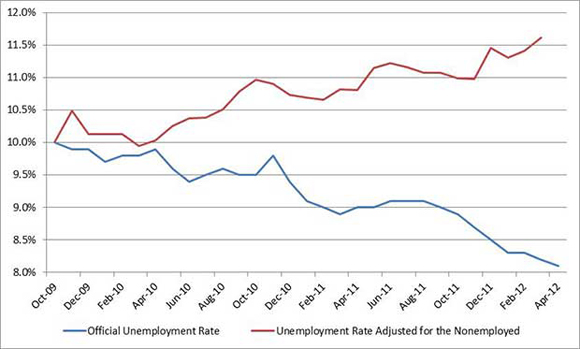The president says the economy is creating jobs: Since October 2009, the economy has added 3.5 million jobs and the unemployment rate has fallen from 10 percent to almost 8 percent. But America isn't feeling the joy, because—believe it or not—politicians are selectively quoting numbers that make it appear the economy is doing better than it really is. Here are some of the most popular lies-by-omission when talking about jobs and unemployment.
This excerpt originally appeared in US News and World Report
The president says the economy is creating jobs: Since October 2009, the economy has added 3.5 million jobs and the unemployment rate has fallen from 10 percent to almost 8 percent. But America isn't feeling the joy, because—believe it or not—politicians are selectively quoting numbers that make it appear the economy is doing better than it really is. Here are some of the most popular lies-by-omission when talking about jobs and unemployment.
Lie No. 1: The government knows how many people are unemployed.
We don't know for certain how many people are employed because no one counts them. The Bureau of Labor Statistics estimates the number of unemployed based on a random sampling of the population. In itself, this isn't a problem. Sampling is a well-established method of estimation when it is too time-consuming or expensive to count every single person.
The problem arises when a politician pretends that the estimate is an exact measurement. For example, the Bureau of Labor Statistics has two employment estimates. In one, the bureau asks randomly selected employers how many workers they hired or let go. In the other, it asks randomly selected people whether they found or lost jobs.
According to the first survey, employers added 115,000 jobs in April. According to the second survey, 169,000 Americans lost their jobs. Which one is correct? Neither—they are both estimates. The correct statement is that April's job numbers were somewhere between 115,000 better and 169,000 worse than March's numbers.

